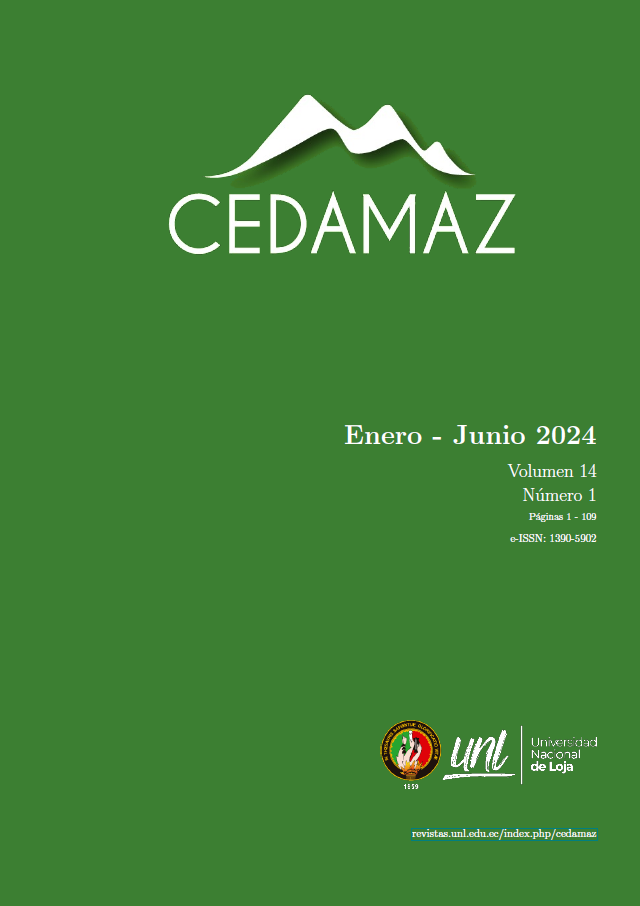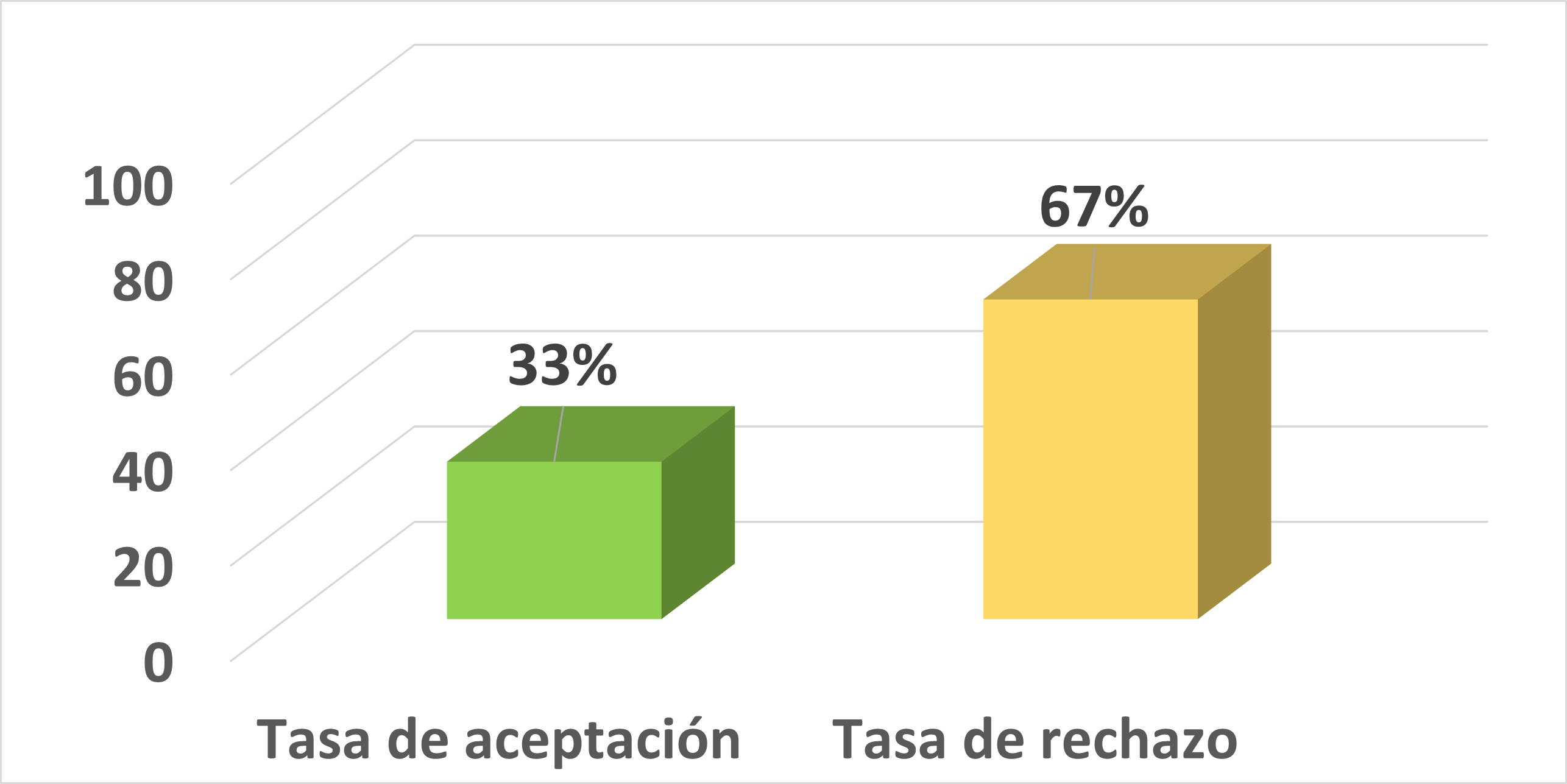Nutritional quality and physicochemical properties of agroecological and conventional kale (Brassica Oleracea Var. Sabellica L).
DOI:
https://doi.org/10.54753/cedamaz.v14i1.1898Keywords:
Kale, Nutritional value, Protein, Vitamins, MineralsAbstract
There is a demand for vegetables with high nutrient content and quality. However, conventional agriculture seeks to increase production by focusing on monoculture and agrochemicals usage, without taking into account the consequences that this causes to health, the environment, and the soil. Agroecology emerges as an alternative to avoid these negative effects since it focuses on the production of healthy foods with high nutritional content. Some studies have shown that kale is considered a superfood due to its high nutritional value and benefits for human health; however, in Ecuador, there is no information on the nutritional quality of this vegetable. Therefore, the objective of this research was to evaluate the nutritional quality and physicochemical properties of kale in agroecological and conventional production systems. The methodology consisted measuring pH, acidity, Brix degrees, color, width and length of the leaf, finally, the nutritional quality was determined considering its macro and micronutrients. The results show that the physicochemical properties of the kale, between the two production systems did not exist statistically significant differences, since the values of pH (6 - 6.17), acidity (0.18 - 0.20%) and °Brix (4.96 – 5.29%) are similar. The nutritional quality of the kale from the agroecological system was higher than from conventional system crops because it was higher in macronutrients between 12 and 48%, in minerals it increased between 25 and 76%, and 6.44% for vitamin C.References
Altieri, M. (1999, marzo 17). AGROECOLOGÍA: Bases científicas para una agricultura sustentable. Biodiversidad en América Latina. https://www.biodiversidadla .org/Documentos/AGROECOLOGIA_Bases_cientificas_para_una_agricultura_sustentable.
Andrade, C. M., y Ayaviri, D. (2018). Demand and Consumption of Organic Products in the Riobamba Cantón, Ecuador. Información tecnológica, 29(4), 217-226. https :// doi .org / 10 .4067 / S0718-07642018000400217.
Antón, L. (2018). Estudio comparativo de la composición de macronutrientes y micronutrientes en diferentes tipos de lechugas procedentes de cultivo ecológico y convencional. Ingeniería del agua, 18(1), ix. https://doi.org/10.4995/ia.2014.3293.
AOAC. (2019). Official methods of analysis of AOAC International (21 ed). AOAC International. http://www.eoma.aoac.org/.
Arroyo, P., Mazquiaran, L., Rodríguez, P., Valero, T., Ruiz, E., Ávila, J., y Varela, G. (2018). Informe Estado de Situación sobre “Frutas y Hortalizas: Nutrición y Salud en la España del S. XXI”. SEÑ - Sociedad Española de Nutrición. https://www.sennutricion.org/es/2018/04/26/informe -estado -de -situacin -sobre -frutas -y-hortalizas-nutricin-y-salud-en-la-espaa-del-s-xxi.
Barrera, C. (2020). Concentración de nitratos en lechuga orejona (Lactuca sativa L. var. Parris Island) en un cultivo intercalar con hinojo (Foeniculum vulgare Mill.).
Behr, U., y Wiebe, H.-J. (1992). Relation between photosynthesis and nitrate content of lettuce cultivars. Scientia Horticulturae, 49(3-4), 175-179. https://doi .org/10.1016/0304-4238(92)90155-6.
Campuzano, A. M., Cornejo, F., Ruiz, O., y Peralta, E. L. (2010). Efecto del Tipo de Producción de Banano Cavendish en su Comportamiento Poscosecha. Revista Tecnológica - ESPOL, 23(2), Article 2. http://200.10.150.204/index.php/tecnologica/article/view/54.
Casajús, V., Perini, M., Ramos, R., Lourenco, A. B., Salinas, C., Sánchez, E., Fanello, D., Civello, P., Frezza, D., y Martínez, G. (2021). Harvesting at the end of the day extends postharvest life of kale (Brassica oleracea var. Sabellica). Scientia Horticulturae, 276, 109757. https://doi.org/10.1016/j.scienta.2020.109757.
Casas, A., y Moreno, A. (2015, febrero 10). Seguridad alimentaria y cambio climático en América Latina. Biodiversidad en América Latina, 30(4). https://www.biodiversidadla.org/Documentos/Revista _LEISA_Nutricion_y_agricultura_familiar_-_Volumen_30_numero_4.
Chávez Caiza, J. P., y Burbano Rodríguez, R. T. (2021). Cambio climático y sistemas de producción agroecológico, orgánico y convencional en los cantones Cayambe y Pedro Moncayo. Letras Verdes. Revista Latinoamericana de Estudios Socioambientales, 29, 149-166. https://doi.org/10.17141/letrasverdes.29.2021.4751.
Crecente-Campo, J., Nunes-Damaceno, M., Romero-Rodríguez, M. A., y Vázquez-Odériz, M. L. (2012). Color, anthocyanin pigment, ascorbic acid and total phenolic compound determination in organic versus conventional strawberries (Fragaria×ananassa Duch, cv Selva). Journal of Food Composition and Analysis, 28(1), 23-30. https://doi.org/10.1016/j.jfca.2012.07.004.
De Oliveira, A. B., De Almeida López, M. M., Moura, C. F. H., De Siqueira Oliveira, L., De Souza, K. O., Filho, E. G., Urban, L., y De Miranda, M. R. A. (2017). Effects oforganic vs. Conventional farming systems on quality and antioxidant metabolism of passion fruit during maturation. Scientia Horticulturae, 222, 84-89. https://doi.org/10.1016/j.scienta.2017.05.021.
De Souza Araújo, D. F., Da Silva, A. M. R. B., De Andrade Lima, L. L., Da Silva Vasconcelos, M. A., Andrade, S. A. C., y Asfora Sarubbo, L. (2014). The concentration of mineralsand physicochemical contaminants in conventional andorganic vegetables. Food Control, 44, 242-248. https://doi.org/10.1016/j.foodcont.2014.04.005.
Domínguez, A., García, M., y Raigón, M. (2015). La calidadde los frutos cítricos de producción ecológica. http://sedici.unlp.edu.ar/handle/10915/56245.
Fontana, L., Rossi, C. A., Hubinger, S. Z., Ferreira, M. D., Spoto, M. H. F., Sala, F. C., y Verruma-Bernardi, M. R. (2018). Physicochemical characterization and sensory evaluation of lettuce cultivated in three growing systems. Horticultura Brasileira, 36(1), 20-26. https://doi.org/10.1590/s0102-053620180104.
Ga˛stoł, M., Domagała-S´wia˛tkiewicz, I., y Kros´niak, M. (2011). Organic versus conventional – a comparative study on quality and nutritional value of fruit and vegetable juices. Biological Agriculture & Horticulture, 27(3-4), 310-319. https://doi.org/10.1080/01448765.2011.648726.
Gliessman, S. R. (1998). Agroecology: Ecological processes in sustainable agriculture. Ann Arbor Press.
Kapoulas, N., Koukounaras, A., y Ili´c, Z. S. (2017). Nutritional quality of lettuce and onion as companion plants from organic and conventional production in north Greece. Scientia Horticulturae, 219, 310-318. https://doi.org/10.1016/j.scienta.2017.03.027.
Martínez, S., Olmos, I., Carballo, J., y Franco, I. (2010). Quality parameters of Brassica spp. Grown in northwest Spain. International Journal of Food Science & Technology, 45(4), 776-783. https://doi .org/10 .1111/j .1365-2621.2010.02198.x.
Mora Bautista, M. A. (2021). Desarrollo y producción de Kale (Brassica oleracea var. Acephala auct.) en campo. [Tesis Doctoral]. Institución De Enseñanza E Investigación En Ciencias Agrícolas.
Nicholls-Estrada, C., y Altieri, M. (2019). Caminos para la amplificación de la Agroecología.
Popa, M. E., Mitelut, A. C., Popa, E. E., Stan, A., y Popa, V. I. (2019). Organic foods contribution to nutritional quality and value. Trends in Food Science & Technology, 84, 15-18. https://doi.org/10.1016/j.tifs.2018.01.003.
Raigón, M. (2018). Calidad del alimento ecológico Sociedad Española de Agricultura Ecológica Agroecología. https://docplayer.es/183208656-Calidad-calidad-del -alimento -ecologico -sociedad -espanola -de -agricultura-ecologica.
Ramírez, F. (2021). El herbicida glifosato y sus alternativas. Universidad Nacional, Instituto Regional de Estudios en Sustancias Tóxicas, 1, 1-29.
Reyes-Munguía, A., Rojas-Trejo, L., Campos-Montiel, R., Quintero-Lira, A., y Carrillo-Inungaray, M. (2017). Propiedades antioxidantes del extracto acuoso de Brassica oleracea var. Sabellica. https://docplayer.es/88643933-Propiedades-antioxidantes-del-extracto-acuoso-de-brassica-oleracea-var-sabellica.html.
Rodríguez, V., y Zumba, D. (2021). Influencia de tres variedades de col (Brassica oleracea) en la elaboración de chucrut—Dialnet. https://dialnet.unirioja.es/servlet/articulo?codigo=8266825.
Santos, A. P. dos, Sousa, C. da S., Santos, Í. P. de O., Jesus, J. C. de, y Souza, F. M. de. (2020). Qualidade de plantas de alface produzidas sob sistema agroecológico e convencional. En R. J. de Oliveira, Agricultura Em Foco: Tópicos em Manejo, Fertilidade do Solo e Impactos Ambientais—Volume 3 (1.a ed., pp. 106-124). Editora Científica Digital. https://doi.org/10.37885/200800871.
Sarandón, S. J., y Flores, C. C. (2014). Agroecología: Bases teóricas para el diseño y manejo de Agroecosistemas. Editorial de la Universidad Nacional de La Plata (EDULP). https://doi.org/10.35537/10915/37280.
Vitón, R., García, G., Soares, Y., Castillo, A., y Soto, A. (2017). AgroTech: Innovaciones que no sabías que eran de América Latina y el Caribe. https ://publications.iadb.org/es/agrotech-innovaciones-que-no-sabias-que-eran-de-America-latina-y-el-Caribe.
Worthington, V. (2001). Nutritional Quality of Organic Versus Conventional Fruits, Vegetables, and Grains. The Journal of Alternative and Complementary Medicine, 7(2), 161-173. https://doi.org/10.1089/107555301750164244.
Yu, X., Guo, L., Jiang, G., Song, Y., y Muminov, M. A. (2018). Advances of organic products over conventional productions with respect to nutritional quality and food security. Acta Ecologica Sinica, 38(1), 53-60. https://doi.org/10.1016/j.chnaes.2018.01.009.
Published
How to Cite
Issue
Section
License
Copyright (c) 2024 CEDAMAZ

This work is licensed under a Creative Commons Attribution-NonCommercial-NoDerivatives 4.0 International License.
Those authors who have publications with this journal, accept the following terms:
- After the scientific article is accepted for publication, the author agrees to transfer the rights of the first publication to the CEDAMAZ Journal, but the authors retain the copyright. The total or partial reproduction of the published texts is allowed as long as it is not for profit. When the total or partial reproduction of scientific articles accepted and published in the CEDAMAZ Journal is carried out, the complete source and the electronic address of the publication must be cited.
- Scientific articles accepted and published in the CEDAMAZ journal may be deposited by the authors in their entirety in any repository without commercial purposes.
- Authors should not distribute accepted scientific articles that have not yet been officially published by CEDAMAZ. Failure to comply with this rule will result in the rejection of the scientific article.
- The publication of your work will be simultaneously subject to the Attribution-NonCommercial-NoDerivatives 4.0 International (CC BY-NC-ND 4.0)









